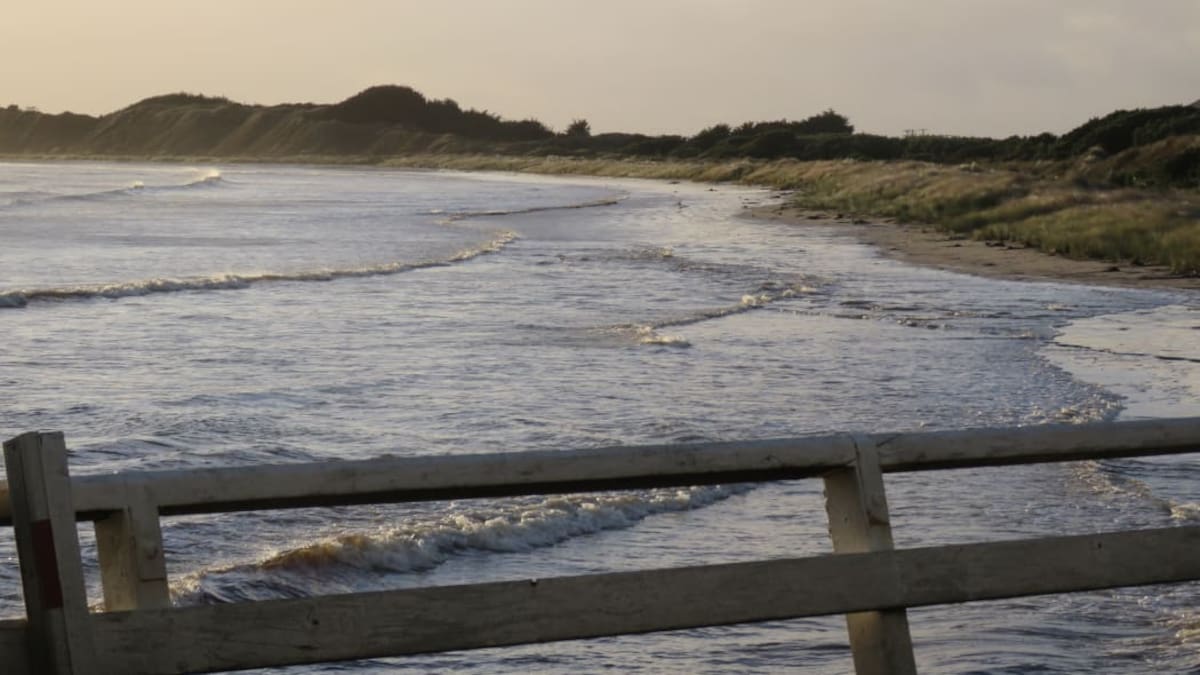Now, reforestation work was underway, and pests needed to be kept out.
“You haven’t got anything if you haven’t got a fence,” Prendeville said.
But using all the normal materials, a fence on the coast could rust through in seven years.
AdvertisementAdvertise with NZME.
Prendeville had learned ways around it – using thicker wire, and plastic inserts to keep metal from touching metal, which were the areas which tended to rust first.
In the swamps, he usually skipped the bottom two lines of wires, as they tended to rust through in a year.
But across the board, things needed replacing more often.
“The expense on the Chathams, well you just double it to the New Zealand standards,” Prendeville said.
Building Research Association (BRANZ) team leader Dr Anna de Raadt said the working theory was that the salt-laden winds could be to blame, with gales picking up the sea spray and throwing it onto fences and roofs, speeding up that rusting process.
She said their research has been a collaboration with the community.
“Talking to the people living there, it’s amazing to hear stories,” she said. “One of them really brought it home for me. They were saying, ‘Oh we buy a car, bring it over from the mainland to the island, and within three years it’s rusted out.’”
The Chatham Islands are surrounded by sea and exposed to the elements 800 kilometres out in the South Pacific.
Scientists set up four racks of metal squares around the island, and left them out in the elements for a year.
De Raadt explained one set was set up at a local school.
“And it was really fantastic to see their eyes light up and actually hold the samples and look at them, because they’d see something like a beautiful, shiny metal coupon, and they’d compare it to one looking like a swiss cheese.”
AdvertisementAdvertise with NZME.
The results showed corrosion levels were off the charts.
An unprotected carbon steel plate, a millimetre thick, was completely gone within a year, despite lasting more than 50 in rural inland areas.
BRANZ established more sites, and confirmed the results – the corrosion rates were among the highest defined by international standards.
Carbon steel, used in common building products like beams, framing, and nuts and bolts, corroded at a rate more than 22 times faster than inland New Zealand, and more than three times the rate at our harshest coastal sites, like Oteranga Bay in Wellington, and nearly double the highest corrosion rate recorded at marine sites in Europe.
“We are testing other materials to see how they will perform on the Chatham Islands environment,” de Raadt said. “This then can help inform people’s choices about what material to use where.”
“I guess the main point for us is: the right material in the right place.”
AdvertisementAdvertise with NZME.
The current rating system fell short. BRANZ senior scientist Zhengwei Li said materials approved for Zone D – the classification long-held by the Chathams – just didn’t hold up.
“If you use materials approved for Zone D corrosivity in the Chatham Islands, you will have early material failure.”
Building company owner Leith Weitzel moved to the Chathams from Wellington just over a decade ago, and said it was definitely an eye-opener.
“So up in the eaves of sheds or houses, where you would have some sort of mild steel product or galvanised steel product, if it’s not getting rain washing on it, it will start to show corrosion in a few years.”
It changed the materials they used.
“We always opt to use stainless steel externally as much as we can, and we find that’s made a huge difference.”
AdvertisementAdvertise with NZME.
But even using marine-grade stainless, tea staining – that is, those patchy orange streaks that appeared on metal like water from a tea bag – still occurred.
Weitzel said people were often tripped up.
“They might buy a flatpack shed or they’ll buy a tiny home, something that’s of a kit-set nature, and they express that it is quite corrosive and windy and wild over here, and these manufacturers don’t supply some of these buildings, these units up to standard, and they find over time that they have used the wrong nails and structural fittings.”
It was an awareness problem, he said – something the building research association hoped to improve as it took on further tests.
Sign up to The Daily H, a free newsletter curated by our editors and delivered straight to your inbox every weekday.
-RNZ
AdvertisementAdvertise with NZME.

